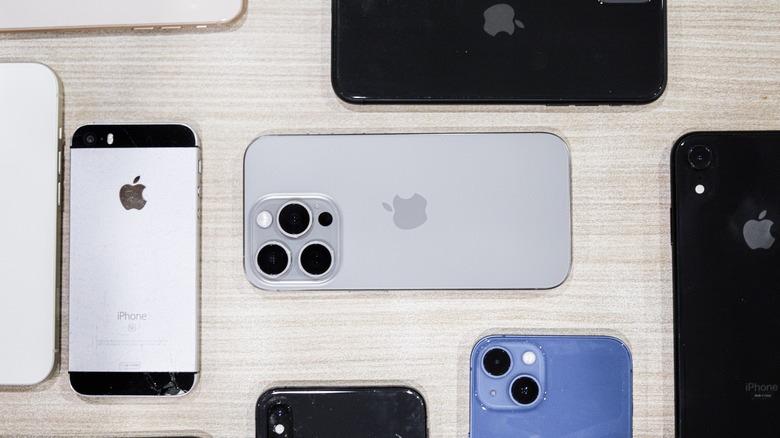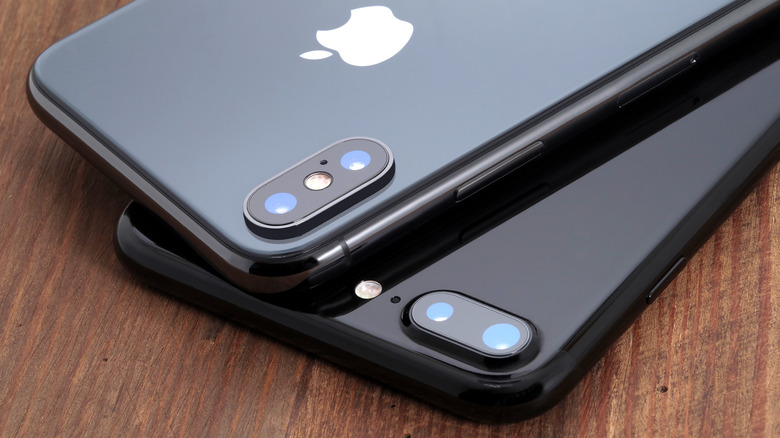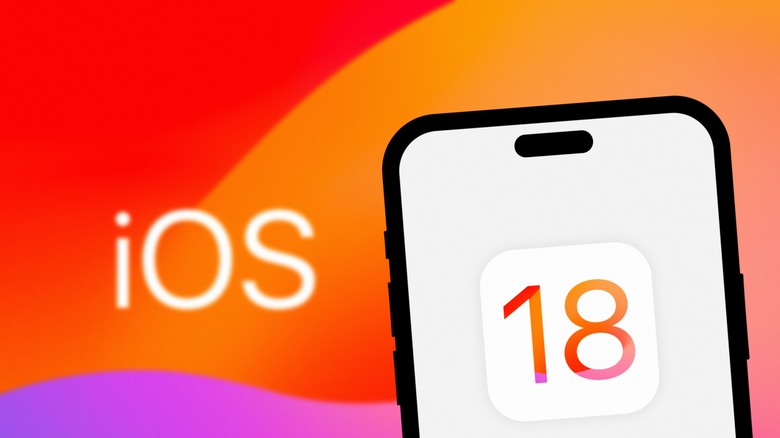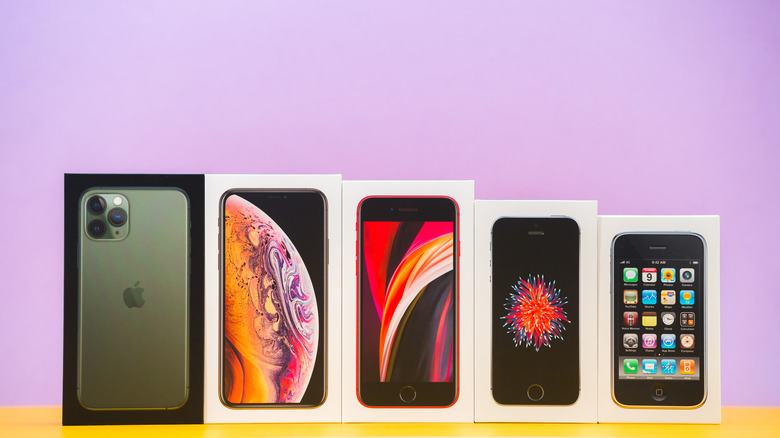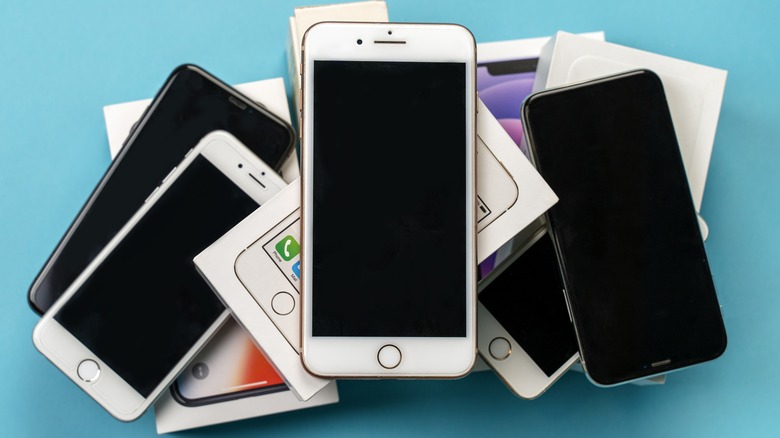Are You Using A Discontinued iPhone? Here's How To Tell (And Why It Matters)
Since its launch in 2007, Apple has added dozens of iPhone models in its portfolio. In previous years, owning the latest iPhone was like a status symbol for Apple ecosystem lovers who even lined up for hours in front of stores ahead of their release. However, these days, many iPhone users are choosing to hold on a little longer to their devices, including those with discontinued models.
In 2019, Business Insider published a survey that claimed less than a quarter of its respondents upgraded their iPhones within the last year. Aside from its premium price, the survey revealed that consumers felt their existing iPhone "works fine."
Years later, Apple seems to be feeling the effects of this trend, in addition to the tightening of belts brought about by the rising cost of living everywhere. While Apple claims that its latest model, the iPhone 15, hit its sales targets upon release, the reality is that its sales have been falling worldwide in 2024. Because of this, there have also been unprecedented iPhone discounts for newer models globally.
If you're one of the growing number of iPhone users in the world who have decided to hold on to your existing device until Apple releases a new model that is worthy of your hard-earned cash, you may be asking if there's a downside to not upgrading right away. Well, the answer isn't entirely straightforward, especially if your specific iPhone model has already been discontinued.
How to know if your iPhone has been discontinued
A discontinued iPhone is one that is no longer sold through official Apple channels. Historically, Apple discontinues older models from its stores after every new release. While it doesn't offer an official matrix for determining which models get to stay longer on the shelves, discontinuing older models is believed to help boost sales for newer models.
It's important to note that there is no specific timeline that Apple follows when it discontinues entire product lines. For example, the iPhone mini was only for sale for two years, which was largely attributed to its poor sales. In addition, there are plenty of risks that should be managed when using discontinued technology, even iPhones.
To find out if Apple has stopped production for your specific iPhone model, you first need to know your iPhone model. To do this, you can launch the Settings app and tap General > About. Next to Model Name, you'll be able to see what model your iPhone is, like "iPhone [#]." Then, you can do a quick check on the official Apple Store and search if your specific model is still for sale.
Now that you know if your iPhone is discontinued or not, it's important to know that there are different classifications of discontinued iPhone models: supported, unsupported, vintage, and obsolete. Depending on your device's classification, it can impact whether your iPhone will remain usable in the years to come.
Supported vs. unsupported: What's the difference?
When an iPhone becomes discontinued, the countdown starts for when it will stop being supported. Once an iPhone is unsupported, it will no longer be able to update to the latest operating system. And of course, when one doesn't update their iPhone to the latest operating system, there are several things that can happen (or go wrong), such as performance issues, not having access to the latest features, and a host of known or preventable security issues.
Apple does, however, have a history of releasing critical security patches for discontinued models that are supposedly already unsupported. For example, despite not being able to download the 2023 iOS 17 update, the iPhone X was still included in a rapid security update via the iOS 16.7.8 in May 2024. However, there is no assurance that this will continue for future updates and for all unsupported iPhone models.
For many people, continuing to use discontinued iPhones is not out of the ordinary, especially if they're relatively new and still being supported. After all, many iPhones are still known to work reasonably well years after their launch and using them for as long as possible is one of the best things you can do to improve your overall mobile phone carbon footprint. But, if Apple stopped selling your iPhone model more than five years ago, you should probably consider upgrading for a variety of reasons, such as if your device is already classified as vintage or obsolete.
Is your discontinued iPhone vintage or obsolete?
According to Apple, its devices are considered vintage if they have been out of distribution for more than half a decade (or five years). In general, a vintage rating will affect the frequency of your iPhone's software updates and repairability. As of writing, Apple has classified the iPhone 4 (8GB), iPhone 5, iPhone 6, iPhone SE, iPhone 8 (Red/Plus Red), and iPhone X as vintage.
While a "vintage" rating doesn't automatically guarantee collectors will be fighting for it, some older iPhone models have been successfully auctioned off in the past. In fact, one unopened and supposedly special version of the original iPhone even sold for a whopping $190,372.80 in 2023 (via LCG Auctions).
On the other hand, Apple classifies iPhones as obsolete if they haven't been officially sold for over 7 years. If you're wondering if your iPhone is already considered obsolete, here's the full list that you should watch out for (as of 2024): the original iPhone, iPhone 3G and 3GS, iPhone 4 and 4S, iPhone 5C and 5S, and iPhone 6 Plus, 6s, and 6s Plus.
In some cases, certain iPhone models in the same lineup can remain in distribution longer than others. Additionally, there are some iPhone models that are considered obsolete that were released later than ones that are still considered vintage. For example, the iPhone 6 Plus, which was released in 2014 is already considered obsolete as of 2024; however, despite being released in 2012 (a full two years before the iPhone 6 Plus), the iPhone 5 is still classified as vintage.
What to know when buying a discontinued iPhone
Unfortunately, the list of what is considered vintage or obsolete changes without warning and any old iPhone can be on the chopping block. As of 2024, Apple hasn't axed any of its latest models since the iPhone X, which was released in 2017. That said, you should be mindful of owning models released around this time, especially if you're planning to buy a secondhand one anytime soon.
If you are buying a brand-new, discontinued iPhone model, you'll be eliminating a lot of risks that other people will take with used models. However, if you are getting a secondhand, refurbished, or renewed iPhone there are plenty of things you should consider before buying that iPhone, especially if it has been discontinued.
Once your iPhone model is tagged as obsolete, you won't be able to request repairs or get replacement parts (at least not from official service providers). Not to mention, Apple does not support obsolete or vintage products under AppleCare+ for Business Essentials. So, you better be prepared to risk going to an unofficial repair center in the future, even if your company is subscribed.
Lastly, there's always a risk when it comes to natural degradation with used iPhones, especially their batteries. No matter how well the previous owner takes care of their iPhone, lithium-ion batteries will naturally not be able to hold as much charge with time, so you might need to factor in the cost of replacing an iPhone battery as well.
